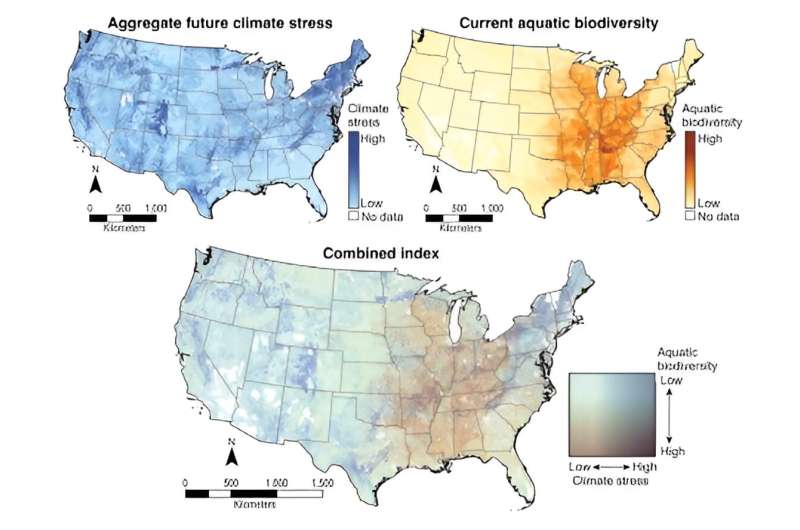This article has been reviewed according to Science X's editorial process and policies. Editors have highlighted the following attributes while ensuring the content's credibility:
fact-checked
peer-reviewed publication
trusted source
proofread
Climate change and its negative affect on aquatic biodiversity: Making global targets local for freshwater protection

Rebecca Flitcroft, a research fish biologist with the USDA Forest Service Pacific Northwest Research Station, wants to shine a light on the need for freshwater protection because biodiversity in freshwater is declining at an alarming rate. To address this critical issue, Flitcroft and her colleagues were recently published in Nature Sustainability with their article, "Making Global Targets Local for Freshwater Protection."
Attention to freshwater is more vital now than ever to protect freshwater ecosystems worldwide. Global freshwater conservation needs to be addressed like sewing a quilt. Targets can only be achieved through a consistent local patchwork of freshwater protection efforts stitched together to compose a global network that blankets every continent on our planet.
But why should the public care? And why should they care now?
Flitcroft explains, "Diversity equals resiliency for ecosystems and people. Biodiversity is our resilience for climate change."
Most of us turn the faucet and water bursts forth instantly—and that's often as much as we think about freshwater. However, our tap is connected to diverse worlds of freshwater-dwelling creatures. These innumerable creatures add to the fortitude of ecosystems, planetary health, and food supply diversity.
According to Flitcroft, freshwater from forests provides clean water to downstream users. Interconnected and clean sources of freshwater provide significant protein resources globally.
Freshwater biodiversity is declining at a faster rate than in any other environment, and biodiversity is a buffer for ecosystem function as environments change. If freshwater ecosystems are to continue providing clean water and food, biodiversity needs to be protected.
By 2030, conservationists aim to have 30% of Earth's lands, seas, and inland waters under effective protection . This so-called 30 x 30 goal of the Kunming-Montreal Global Biodiversity Framework is the product of a 2022 United Nations' biodiversity conference. It's a complicated prospect to protect a percentage of the world's water, yet scores of countries agreed to the goal, which targets areas of high biodiversity and ecosystem function for protections.
According to Flitcroft, the "biggest challenge to freshwater conservation is the complexity of the issue." Unlike lands on which a boundary can be drawn around a specific habitat type, rivers connect headwaters to larger rivers that drain into lakes, reservoirs, wetland complexes, or oceans. Every part of all landscapes is or has been affected by water in some form at some time.
This makes developing freshwater protections difficult—from strategizing where the protections should go and what processes, species, or ecosystem services to target, to creating conservation methods. Another major hurdle is assessing whether those protections are working.
Flitcroft and colleagues' study findings suggested that a combination of protections would likely be needed to cover the complex river networks that compose a complete, interconnected aquatic system.
Conservation on the scale outlined in the Global Biodiversity Framework's 30 x 30 goal can be a daunting prospect—but not impossible. In fact, there are ways that even average citizens can join this quest.
"There are a lot of opportunities for people to get involved in aquatic conservation," Flitcroft suggests. "Watershed councils and water groups are available and looking for volunteers to help in applied work—literally in your own backyard. At a global conservation level, volunteers are the backbone of the International Union for Conservation of Nature—World Commission on Protected Areas (IUCN WCPA)."
More information: Rebecca L. Flitcroft et al, Making global targets local for freshwater protection, Nature Sustainability (2023). DOI: 10.1038/s41893-023-01193-7
Journal information: Nature Sustainability
Provided by USDA Forest Service




















